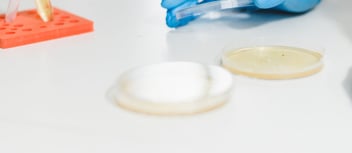In vitro transcription describes the template-directed synthesis of RNA molecules; from short oligonucleotides to those of several kilobases. Such synthetic RNA transcripts are an important tool in structural, biochemical and genetic studies. Mistakes can lead to failed transcription or incorrectly-sized transcripts.
Below we list some of the common problems you may encounter, their cause, and how to solve them:
Problem: Failed Transcription
Possible Cause: Impure RNA template.
Solution: Contaminants like salts can inhibit the activity of the RNA polymerase. Use a clean-up kit to desalt your template DNA.
Possible Cause: Incorrect linearized template.
Solution: Verify that the sequence and restriction map are correct. Check an aliquot of purified DNA on an agarose gel.
Possible Cause: RNA degradation due to RNase contamination during plasmid purification.
Solution: Use an RNase inhibitor.
Possible Cause: Inactive RNA polymerase.
Solution: Always use a positive control template to ensure your in vitro transcription reaction works correctly.
Problem: Incomplete Transcription
Possible Cause: Incorrect linearized template.
Solution: Confirm the sequence and restriction sites. Check an aliquot of purified DNA on an agarose gel.
Possible Cause: Degradation of RNA sample buffer.
Solution: Avoid multiple freeze-thaw cycles and use newly-made buffers.
Possible Cause: Nucleotide concentration is too low.
Solution: The concentration should always be at least 12 µM. Furthermore, adding “cold” rNTPs can increase the proportion of full-length transcripts.
Possible Cause: The reaction is terminating prematurely due to a GC-rich template.
Solution: Decrease the temperature of the transcription reaction from 37 °C to 30 °C for full-length transcripts.
Problem: Transcripts Longer than Expected
Possible Cause: Plasmid is non-linearized.
Solution: After linearization of your template, check an aliquot on an agarose gel to confirm that the digestion was complete.
Possible Cause: rUTP concentration is too high.
Solution: Decrease the concentration of the nucleotide.
Possible Cause: The template has a 3' overhang.
Solution: Use a restriction enzyme that produces 5' overhangs or blunt-ended fragments.
Planning to repeat this experiment? Consider these tips!
- Check your template DNA is linearized via agarose gel electrophoresis
- Use high quality DNA templates,
- Use the recommended nucleotide concentration,
- Always use a positive control.




